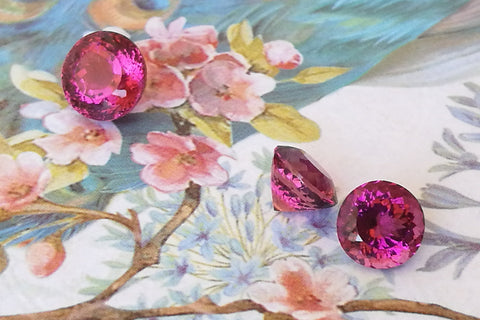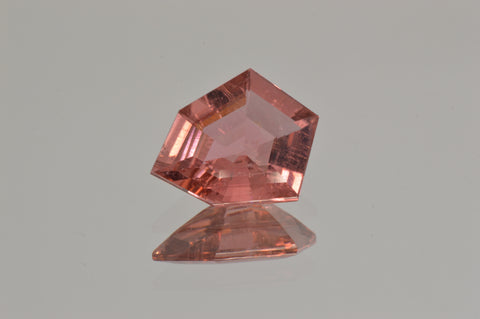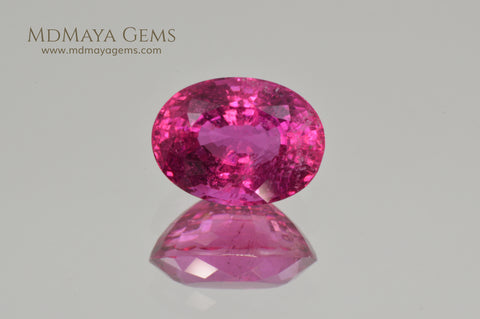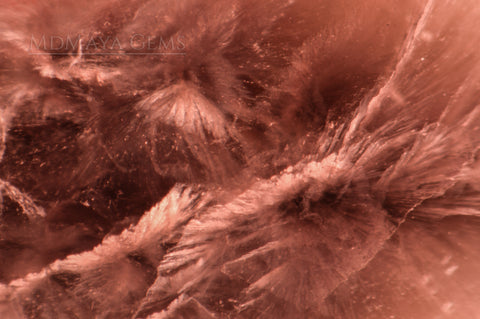Your cart (0)
Your cart is empty
Tax included and shipping calculated at checkout
Drawer menu
Tax included and shipping calculated at checkout
Tourmaline Gemstone Buying Guide. Tourmaline is available in all colors!. Discover its varieties, cuts, clarity, etimology, properties, birthstone, price, etc.
Tourmaline Gemstones is the name for a group of related mineral species, with a very complex chemical composition. The name is derived of the word “tourmali”, this word in singhalese was used for colored gems, mostly zircons.
Contents
Tourmaline gems exist in all colors: Multi colored, Bicolor, Red, Pink, Orange, Yellow, Green, Blue, Purple, Violet, Brown, Neon Blue, Colorless, sometimes Asterism, Change Color and Trapiche. ALL.

The most expensive colors of tourmaline gemstones are Paraiba Tourmaline (vivid green and blue with copper bearing), Rubellite Tourmaline (vivid bright red colored gemstone), Indicolite (blue), Chrome Tourmaline (intense green) and Bicolor. The saturated colors have high demand, in the last years the less saturated colors (soft pink tourmalines) have become popular.

Tourmaline is often cut into rectangular shapes because of its prismatic crystal habit, however Tourmaline's gems offer a HUGE VARIETY OF CUTS: oval, round, emerald, pear, heart, trillion, fancy, cabochon, etc. Cat's eye tourmaline is cut into cabochon, and watermelon tourmaline is often cut into slices.

Tourmalines are strongly pleochroic, this is important for cutters, in order to display the richest attractive color. Tourmalines are available in large sizes, however Paraiba tourmaline are common small sizes, as are Chrome Tourmalines or Rubellite Tourmaline.
Mushroom Tourmaline is a rare variety of tourmaline , and owes its name to the natural crystal growth shape, which is very similar to a mushroom. These mushrooms Tourmalines have two colors, a pink outer zone (Rubellite Tourmaline - Elbaite) and a black area in the center (Schorl Tourmaline).
These gemstones display amazing and beautiful inclusions, and they are ideal for collectors and lovers gemstones.
Paraiba tourmaline, Rubellite tourmaline, Watermelon tourmaline, Red and Pink tourmalines will show eye-visible inclusions unlike the green and blue tourmalines which will show eye-clean inclusions.

Cat's eye tourmaline is usually translucent to opaque (the chatoyancy is because to thin needle-like inclusions).
Interconnected two-phase inclusions typical for tourmaline ("trichite"), film-like liquid inclusions, parallel oriented hollow tubes, needle-like mineral inclusions and fractures.

Inclusions in Mushroom Tourmaline
GENESIS: Pegmatites Tourmalines are found: Afghanistan, Brazil, Burma (Myanmar), China, India, Kenia, Madagascar, Mozambique, Namibia, Nepal, Nigeria, Pakistan, Russia, Sri Lanka, Tanzania, USA, Vietnam, Zambia, Zimbabwe…
- Irradiation
- Heat Treatment
- Fracture filling (oiled, etc..)
SYNTHESIS: Non-commercial
Tourmaline and Opal are the birthstones for October. In 1952, the Jewelers of America association included the Tourmaline in the list of birthstones, becoming the second birthstone for October.
More information about Birthstone
Health benefits of tourmaline: strength; Opal - hope.